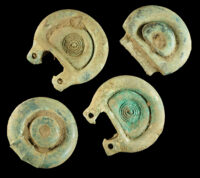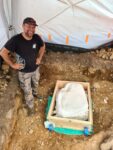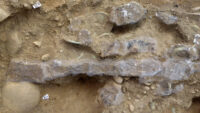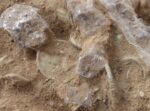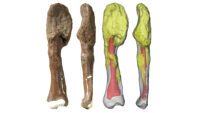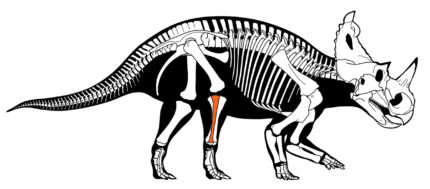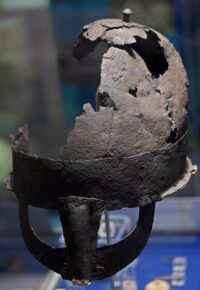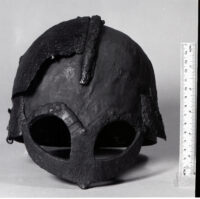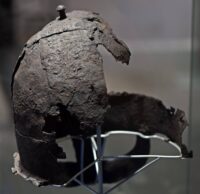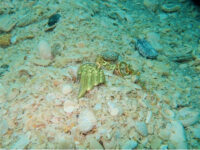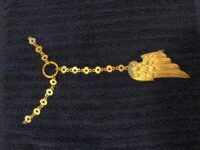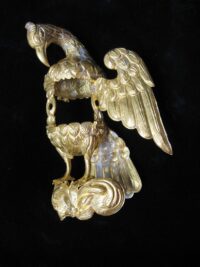 The remains of more than 150 Jewish headstones desecrated by Nazis for use as road pavers were unearthed under the market square of Leżajsk in southeastern Poland. The tombstones were found just eight inches underground when construction work pealed back the asphalt surface of the street on the southwest frontage of the square. It’s one of the biggest finds of plundered matzevot in Poland.
The remains of more than 150 Jewish headstones desecrated by Nazis for use as road pavers were unearthed under the market square of Leżajsk in southeastern Poland. The tombstones were found just eight inches underground when construction work pealed back the asphalt surface of the street on the southwest frontage of the square. It’s one of the biggest finds of plundered matzevot in Poland.
 Last month, bricks laid in a herringbone pattern were discovered under the street running along the southeast side of the market square. At first the brick road was believed to date from the late 19th or early 20th century when Leżajsk was part of Galicia, a province of the Austrian Empire. The discovery of the desecrated tombstones reveals a more recent and far more sinister history.
Last month, bricks laid in a herringbone pattern were discovered under the street running along the southeast side of the market square. At first the brick road was believed to date from the late 19th or early 20th century when Leżajsk was part of Galicia, a province of the Austrian Empire. The discovery of the desecrated tombstones reveals a more recent and far more sinister history.
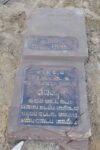 Leżajsk had an important Jewish community from the early 16th century until it was all but obliterated under Nazi occupation. One of the founders of the Hasidic movement, Rabbi Elimelech Weisblum, was born and died there in the 18th century, his tomb becoming a center of pilgrimage. Between the World Wars, an estimated third of the town’s population, around 1,500 people, were Jewish. Most of them were deported to the Soviet occupation zone. The rest would be confined to a ghetto which was liquidated in September 1942 and its residents ultimately deported to Belzec extermination camp.
Leżajsk had an important Jewish community from the early 16th century until it was all but obliterated under Nazi occupation. One of the founders of the Hasidic movement, Rabbi Elimelech Weisblum, was born and died there in the 18th century, his tomb becoming a center of pilgrimage. Between the World Wars, an estimated third of the town’s population, around 1,500 people, were Jewish. Most of them were deported to the Soviet occupation zone. The rest would be confined to a ghetto which was liquidated in September 1942 and its residents ultimately deported to Belzec extermination camp.
 The German occupiers began paving the market square street in late 1939 using brick from the synagogue they had burned down on September 15th, two days after the Wehrmacht captured Leżajsk. When they ran out of brick, they plundered the Jewish cemetery of its headstones, cut off the curved tops to fit them together easily, and used them as pavers. They were then covered with a layer of sand and asphalt.
The German occupiers began paving the market square street in late 1939 using brick from the synagogue they had burned down on September 15th, two days after the Wehrmacht captured Leżajsk. When they ran out of brick, they plundered the Jewish cemetery of its headstones, cut off the curved tops to fit them together easily, and used them as pavers. They were then covered with a layer of sand and asphalt.
 Aside from the shorn tops and 50 or so stones that had been cut up into smaller pieces to fill gaps, the matzevot are in unusually good condition. Their burial under sand helped preserve original reliefs, gilding and painted lettering lost on the few headstones surviving in the cemetery. (The cemetery was rebuilt from ruins after the war, including the tomb of Rabbi Weissblum which today sees thousands of Hasidic pilgrims a year.)
Aside from the shorn tops and 50 or so stones that had been cut up into smaller pieces to fill gaps, the matzevot are in unusually good condition. Their burial under sand helped preserve original reliefs, gilding and painted lettering lost on the few headstones surviving in the cemetery. (The cemetery was rebuilt from ruins after the war, including the tomb of Rabbi Weissblum which today sees thousands of Hasidic pilgrims a year.)
Some of the headstones still retain gold lettering and coloured painting. The blue, green, yellow and red colours of the inscriptions are clear and vivid.
Ornamental crowns, candlesticks, flowers, lions and hands are perfectly visible. One has gold-painted letters. […]
So far, little is known about the age of the matzevot or who they belonged to. “We can’t read the years, because everything is in Yiddish. Some matzevot are made of sandstone, others of concrete.
These are better preserved, because the sandstone cracked in contact with water. They are in different condition, but they are really beautiful,” said Ewa Kędzierska, the archaeologist supervising the work on the market square in Leżajsk.
The headstones are now being stores on property belonging to the Leżajsk council. Town and regional heritage officials will consult with the Rabbinical Committee for Cemeteries to determine the final disposition of the tombstones.

